#university of washington institute for exploration
Photo
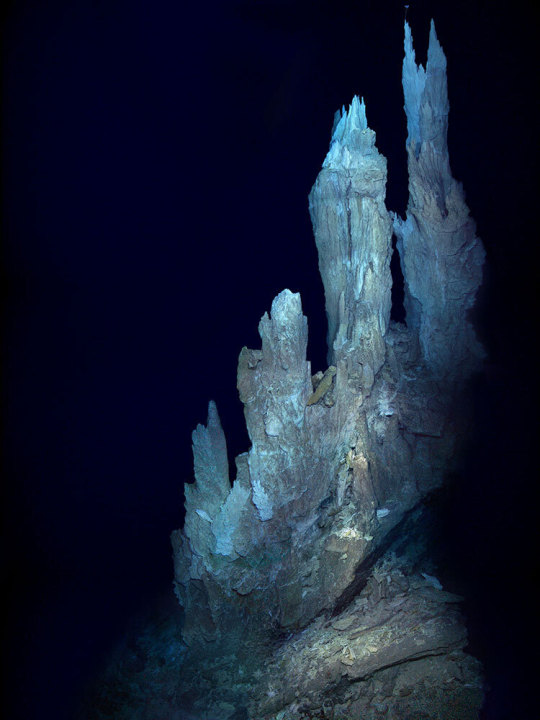
‘Impossible chemistry’: That’s one description of the activity on the ocean floor. Active vents on the seafloor, such as this roughly 100-foot-tall chimney in the Atlantic’s Lost City Hydrothermal Field, rapidly produce simple organic molecules that could have been key to the emergence of life on Earth.
PHOTOGRAPH BY D. KELLEY & M. ELEND, UNIV. WASHINGTON INST. FOR EXPLORATION/
URI-IAO/NOAA/THE LOST CITY SCIENCE TEAM
#d. kelley#m. elend#university of washington institute for exploration#photographers#national geographic#landscape#nature#ocean floor#atlantic's lost city hydrothermal field
16 notes
·
View notes
Text
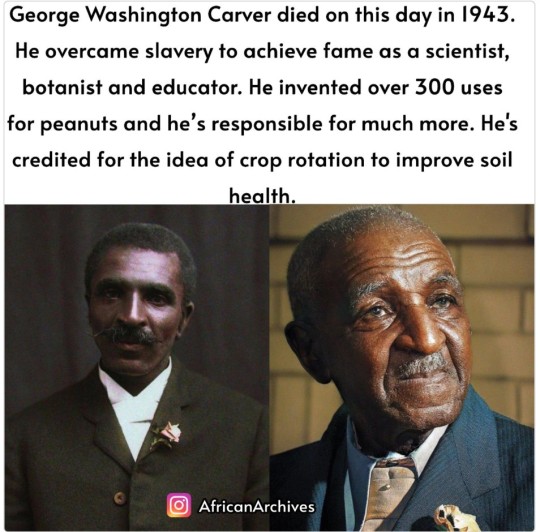
George Washington Carver had a difficult start in life. His father died shortly before his birth And weeks later, slave traders kidnapped him and his mother. The group sent out to find him and his mother exchanged a horse for the young boy. His mother, however, was lost to the traders.
Often sick, frail, he was not expected to live. But live he did, and from a young age, he showed much devotion to work and a desire for learning. He was curious, and as he'd roam the woods near the Carver home, exploring flowers, trees, rocks, and birds, he began asking questions about their purpose.
While much of his education early on was self-motivated, he began formal schooling at ten. He learned of a school about eight miles from the Carver home. And without any money or a new home, he left the Carver's to attend this school, living in an old barn while doing odd jobs to earn money to survive. Eventually, he was adopted into a family there.
Education for George would continue through completing a Master's Degree in agriculture from Iowa State University in 1896. After which, he took a job as Head of the Agricultural Department at the Tuskegee Institute in Alabama.
George was also an artist. At the age of 30, Carver gained acceptance to Simpson College in Indianola, Iowa, where he was the first Black student. Carver studied piano and art.
As an agricultural scientist and inventor, his goal was to help farmers improve their lives by earning more from their crops. He found hundreds of uses through his research of peanuts in particular and other products such as sweet potatoes and pecans. His work was instrumental and impactful. Between 1915 and 1918, acreage for peanut cultivation grew from half a million to over four million acres.
After George passed away in 1943, Franklin D. Roosevelt sent a message that said: "All mankind are the beneficiaries of his discoveries in the field of agricultural chemistry. The things which he achieved in the face of early handicaps will for all time afford an inspiring example to youth everywhere."
Source: African Archives
275 notes
·
View notes
Text
Not they tryna reenact KOSA… anyway yall, here’s why KOSA is bad!!
If you don’t already know, KOSA, or Kids Online Safety Act is a bill that was proposed to keep children safe on the internet. You might ask ‘why is this bill bad if it’s in favor of supporting the safety of children online’? Well, according to stopkosa.com, it puts pressure on platforms to add even MORE filters on anything they think is inappropriate for children. This is especially harmful for LBGTQIA+ youth because the knowledge about this topic would be censored, as well as knowledge on suicide prevention and LGBTQIA+ support groups. Do you see how this an issue? For those children who are wanting to learn more about these topics they’d be turned away because of this bill. It would also be likely that it’ll allow the shutdown of websites that allow them to learn about race, sexuality and gender.
This bill would also add more internet surveillance for all users across all social media platforms. It would expand the use of age verification and parental monitoring controls. These things in itself are already very invasive, but doesn’t take into consideration the children who live in unsafe environments where they are domestically abused and/or are trying to escape these situations. To add my two cents onto this, I strongly believe that the KOSA bill is an unnecessary violation of our first amendment rights (if you’re American), and doesn’t really make the internet any more safer. It actually makes it more unusable for youth. Hypothetically, if this bill were to be passed, then this would make social media unusable for literally anybody. To censor content from the youth about wanting to learn about their identity is extremely harmful. Blocking them from accessing resources that may prove as helpful in their scenarios is outlandish and unneeded. We try to shelter our youth so much to the point where we try to boil them down to only being with their parents want them to be and also not being able to let them learn and explore about other things that they may want to identify themselves with. This is very harmful.
This is a list of companies who are saying no to KOSA ..
• Access Now
• ACLU (American Civil Liberties Union)
• Black and Pink National
• Center for Democracy & Technology
• COLAGE
• Defending Rights & Dissent
• Don’t Delete Art
• EducateUS: SIECUS In Action
• Electronic Frontier Foundation
• Equality Arizona
• Equality California
• Equality Michigan
• Equality New Mexico
• Equality Texas
• Fair Wisconsin
• Fairness Campaign
• Fight for the Future
• Free Speech Coalition
• Freedom Network USA
• Indivisible Eastside
• Indivisible Plus Washington
• Internet Society
• Kairos
• Lexington Pride Center
• LGBT Technology Partnership
• Massachusetts Transgender Political Coalition
• Media Justice
• National Coalition Against Censorship
• Open Technology Institute
• OutNebraska
• PDX Privacy
• Presente.org
• Reframe Health and Justice
• Restore The Fourth
• SIECUS: Sex Ed for Social Change
• SWOP Behind Bars
• TAKE
• TechFreedom
• The 6:52 Project Foundation, Inc.
• The Sex Workers Project of the Urban Justice Center
• Transgender Education Network of Texas
• TransOhio
• University of Michigan Dearborn – Muslim Student Association
• URGE
• WA People’s Privacy
• Woodhull Freedom Foundation
There is something you can do to stop the KOSA bill from being passed! On the website I linked, there is a petition. All you have to do is fill out the information and it’ll send off an email for you. The email reads as follows:
I’m writing to urge you to reject the Kids Online Safety Act, a misguided bill that would put vulnerable young people at risk.
KOSA would fail to address the root issues related to kid’s safety online. Instead, it would endanger some of the most vulnerable people in our society while undermining human rights and children’s privacy. The bill would result in widespread internet censorship by pressuring platforms to use incredibly broad “content filters” and giving state Attorneys General the power to decide what content kids should and shouldn’t have access to online. This power could be abused in a number of ways and be politicized to censor information and resources.
KOSA would also likely lead to the greater surveillance of children online by requiring platforms to gather data to verify user identity.
There is a way to protect kids and all people online from egregious data abuse and harmful content targeting: passing a strong Federal data privacy law that prevents tech companies from collecting so much sensitive data about all of us in the first place, and gives individuals the ability to sue companies that misuse their data.
KOSA, although well-meaning, must not move forward. Please protect privacy and stop the spread of censorship online by opposing KOSA.
The website also gives you like a format of what you can say if you chose to call your representatives. If after reading this post, you feel inclined to do something then I would say just go ahead and do it. My first time learning about KOSA was today immediately after seeing the post I felt inclined to send my lawmakers an email. Please try to help when you can and this will only take a few minutes so I think this is something that you can consider. This post is getting a little long now, so I’ll stop here. There are more resources online if you would like to learn more about the cons of this KOSA bill, thank you for reading.
#wlfabby#fuck kosa#kosa#internet censorship#stop kosa#lgbtqia#lgbtq community#laws#stop this bill from being passed. 🙏
98 notes
·
View notes
Text
A Duck’s Dynasty
A/n: Anon requested!
This is a work of fiction so bear with me on the royal family details! Happy reading!

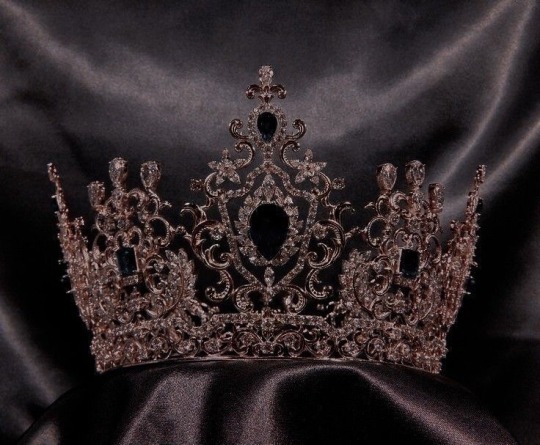
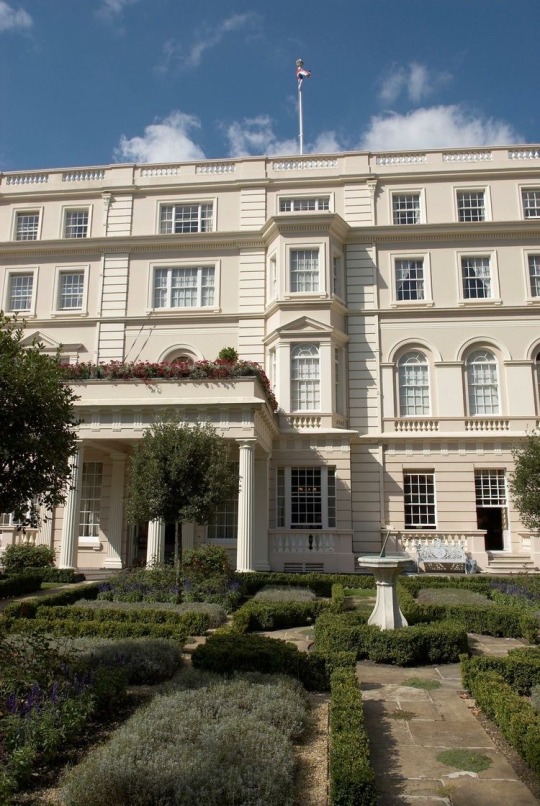
You didn’t grow up the way most kids do. Some people’s parents are married and raise their family in a happy home where there’s laughter and warmth and…love. Your parents were in love, but they weren’t married when you came along, quite the opposite actually. Your father had just been caught up in a messy affair with your mother, his longtime “friend.” Then he divorced his wife, the people’s princess, who passed away mere months before you were born. It was not the most ideal time for Prince Charles to give the world another reason to despise him. So you were hidden away, raised by your mother’s favorite lady-in-waiting, Georgie and her husband Oliver. They couldn’t have children of their own so they loved you with every fiber of their being, cherishing your firsts like they were miracles sent straight from heaven. But there was always a reminder that you weren’t truly theirs, you had gifts sent from your parents, every holiday without fail, extravagant toys and clothes that were painful moments of reality, just as real as the royal blood pulsing through your veins.
The queen had always known of your existence and insisted that even though you were hidden from the public eye, you would live as one of her grandchildren. You attended the finest boarding schools in the UK and became fluent in three languages by the time you had hit the third grade. Everything was falling into place to introduce you to the world as the daughter of Prince Charles of Edinburg and Camila, the Duchess of Cornwall on your 18th birthday. At age 16, your roommate Violet, who was from Seattle, Washington in the United States, introduced you to the vast world of college applications. College sounded so much better than an uncomfortable dress and shaking hands with people who had dedicated their lives to hiding your existence. You spent the next two weeks before your break gathering information to present your argument.
“What if we just postpone my introduction to society until after I graduate? If I remember correctly, you both have always said you want me to experience the wonders of the world. What better way to do that than to actually explore and see what’s out there?” You practically begged.
“I even have the perfect major picked out, journalism. I want to use my media training for good, to study the ins and outs of everything that is out there in order to be prepared for when my name is trending on Google worldwide.”
A year later, you were all moved in to begin your freshman year at the University of Oregon. College was probably the single most fun time you’d ever had in your life, the parties were legendary and you’d really built a family with your roommates. And your job on campus, going over stats and highlights, recapping Duck football games was honestly pretty fulfilling.
“Hey y/n, I know it’s short notice but I need you to cover for Bradley this afternoon. He’s got an interview with Justin Herbert but he just found out has strep so we need you to step in. We’ve got the notes and all the questions ready, you just need to ask them. Can you do that?” Your boss asked, pleading for your help.
You had to admit the opportunity was exciting. Everyone on campus wanted to talk to the starting quarterback and pick his brain so you figured, why not give it a shot. Media coverage in the PAC-12 was an institution of its own, you barely got your two questions in and the rest of the time was spent recording and taking notes in order not to miss anything. Of course when you were walking back to the office, you dropped your phone.
As you bent down to pick it up, someone swooped in and grabbed it before you had the chance.
“You might need this.” Justin says with a smile, holding out the device that looked much smaller in his hands.
“Thank you, I’m not used to carrying all this stuff. My plans kind of changed today when Tyler asked me to cover for Bradley. Got to interview the starting quarterback today, he’s kind of a big deal around here you know?”
He rolls his eyes and grabs some of the notes out of your hands. “Careful, you might make your boyfriend jealous of this quarterback guy.”
“You know…come to think of it, you kinda look like him.”
“Do I?” He asked with a smirk on his face. You loved to see the little dimple peak out.
You tilt your head, grabbing his chin to turn his face from side to side. “Yeah, you look…exactly like Justin Herbert. It’s crazy.” You let out a laugh, looking around to make sure the two of you are still alone.
He nods his head slowly, stepping forward and closing the distance between you. Softly pressing his lips against yours, he smiles into the kiss, quickly losing himself in it. He didn’t have to be anything for anyone when he was with you, he could just…be. A sense of peace washed over him as he relaxed and pursed his lips, resting his forehead against yours to catch his breath. “I um—I have to ask you something.”
“Sure, what’s up?”
“Well my parents are on this ‘final countdown’ thing before I leave and they’ve been hearing about you and want to meet you for dinner later this week. If you’re up for it?”
His face dropped when you didn’t answer. “Justin um, I think we need to talk.”
“Oh great. Just the words every guy wants to hear after telling his girlfriend that—”
You could tell where his mind was going, the plummeting confidence that he had in your relationship that very few people were aware of, especially not your “parents.”
“No it’s not about us! I would love to meet your mum and dad, but—can we just talk about this somewhere else? I really need to tell you this before we bring any more people into this.”
“Okay yeah, let’s go upstairs to the quarterback room, no one will find us there.” He digs in his pockets for the keys as you press the button on the elevator. The two of you rode in silence and you could practically hear the gears in his brain turning.
He led you over to his favorite chair, one that he’d spent countless nights with you watching film as you did your homework. This was home…and you were about to ruin this little fairy tail you’d created with your very own Prince Charming.
The tight lipped look on your face made him nervous. He knew from your accent that you were going to be heading back to the UK eventually, maybe sooner than he’d hoped and you wanted to rip the bandaid off before things got too messy and feelings were involved. Little did you know, it was way too late for him.
“Justin I—am different. I told you I’m from London, which I am technically, but it’s a bit more complicated than that. Oh bloody hell this is a lot harder than I thought. Um basically…I’m a princess. My parents had a very public affair years ago and then when Princess Diana was gone they didn’t want to bring more drama into a grieving country so I didn’t grow up with my half brothers. I was raised—”
“Wait.” He mutters out. “Your family is…the royal family? The actual royal family?”
You let out a humorless laugh, anxiously waiting for his shock to settle. “The very one. I know it’s a lot but I didn’t want to meet your family without telling you the truth. I only came here to study media and understand the ins and outs of gossip sites versus real journalism and I would never want to put you in a compromising position. I mean, you don’t even have an Instagram.”
His laugh calms you both a bit, the tension that you felt brewing was slowly melting away. Justin had always had this special ability to make the chaos seem so calm. “Thank you for telling me, but this isn’t going to scare me away, I like you a little too much to just let you go.” He held your face in his hands, peppering soft kisses anywhere he could.
“I like you too, a lot. So much that I don’t want to ruin your life by destroying your privacy. You have so much to look forward to, I don’t want your accomplishments to be overshadowed by—”
He shakes his head with a chuckle, “we’ll cross that bridge when we get there, don’t worry about it. For right now we just need to make sure that you’re ready for a Herbert family dinner. My mom will be pulling out the baby pictures, no doubt.”
“Oh I cannot wait for that,” you pinch his cheek, releasing a breath you hadn’t even noticed you were holding, “thank you for being so understanding. I know it’s a lot to take in.” Justin gave you a simple nod and welcomed you into his arms for a comforting hug.
Present day…
You always knew this day would come. The car was waiting for you outside, a life filled with countless demands, photo ops and so many decisions that would involve none of your input. Justin insisted on saying goodbye the night before, there were tearful promises not to forget the last four years and blatant lies that breaking up would be for the best. It was like you’d just lost a piece of your soul and you were signing your life away to the devil. Nothing would ever be the same.
Were you ready for this? Did you really want to give up your life in LA for your “familial duty” and “loyalty to your country?” What did that even mean? Was any of this actually worth giving up your happiness?
“I’m so sorry, can you make a quick stop before we head to the airport, please?”
The driver nods and puts in the address you provide, sending an array of butterflies in your stomach.
When he opened the door, your heart skipped a beat. It felt like you were seeing him for the first time…all over again.
“Y/n? What—what are you doing here?”
You closed the door behind you, suddenly feeling like you’re out of breath. “I have felt more joy in the last few years with you than I have in my entire life. I always felt like I wasn’t enough and had to hide but with you? There’s so much to look forward to and if you think I’m going to let some stupid little crown get in the way then you’re sadly mistaken. The only title I want is to be yours, until the wheels fall off.”
“Justin, I am not a fucking princess. I’m just me…so here I am, telling you that I love you and I’m not going anywhere. My life is here.”
“I fucking love you,” he whispers onto your lips after kissing you softly. Your hand finds it’s way into his hair as you lean in again, basking in the glow of being home. This time you knew it’s be full of laughter, warmth and so much love.
#justin herbert#justin herbert imagine#Justin Herbert fluff#justin herbert x reader#justin Herbert fanfic#nfl imagine
66 notes
·
View notes
Text
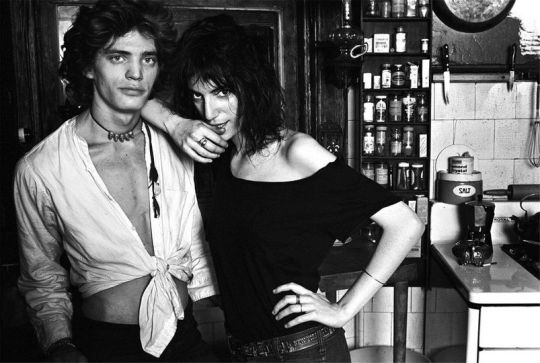
Patti Smith arrived in New York on July 3, 1967, via the decidedly un-scenic Port Authority Bus Terminal (625 8th Ave.), where she immediately transferred to the subway and headed for Brooklyn. She hoped to connect with a friend who was enrolled at the nearby Pratt Institute, an Engineering and Arts college in Clinton Hill. Unfortunately, it was summer break and her friend had moved to a new apartment. One of the current residents knew where her friend could be found, though, and offered to direct her there. This would be her first fleeting encounter with Robert Mapplethorpe, a young Pratt art student, and the man who would ultimately become her closest companion for the next few years. Alas, her friend was not at the said address, so Patti would sleep rough for the next several days, on porches, and in Central Park close to the statue of Alice in Wonderland.
Like many young newcomers, she would wander the streets of Greenwich Village and spend hours observing the people in Washington Square Park, an active gathering place for artists, folkies, activists, and people of every stripe imaginable. She explored St. Marks Place and the East Village, then a fairly ragged but colorful neighborhood of immigrants, hippies, artists, and the poor, always dragging her plaid suitcase along with her. One day she and a street friend found a little money and treated themselves to a hot meal at the Waverly Diner (385 6th Ave.), but otherwise she ate day-old bread and handouts. The rest of the time she was desperately looking for work, and after a disastrous single shift waiting tables at a Times Square restaurant, she found work at the midtown flagship location of Brentano’s (586 5th Ave.), a venerable bookstore near Rockefeller Center. She still had no place to stay, though, and often surreptitiously slept in the store overnight, only to emerge from the bathroom in the morning as the others readied the store. One day she ran into Mapplethorpe again in the bookstore. He, coincidentally, worked at the downtown branch of Brentano’s (20 University Pl.) in the Village. Not long afterwards, in the midst of an uncomfortable date with an older bookstore patron, Patti spotted Mapplethorpe in Tompkins Square Park, where he happily rescued her by posing as her boyfriend. The two shared an egg cream at Gem Spa (131 2nd Ave.) while commiserating. The pair would become inseparable. He brought her to stay at his place, an attic room in the home of some friends on Waverly Avenue in Brooklyn. After several weeks, the two had enough money saved for their own place nearby at 160 Hall St. on the second floor for $80 per month. This would become their headquarters for well over a year.
By winter, both Patti and Robert had lost their jobs at Brentano’s but found seasonal employment at FAO Schwarz (745 5th Ave.), the gigantic toy shop. Robert decorated windows, but Patti was stuck at the cash register. Afterward, she worked briefly at Argosy Books (116 E. 59th St.) before settling at Scribner’s Book Store (597 5th Ave.). Scribner’s would be her steady job for the next couple of years. Robert, meanwhile, went through a succession of jobs, one of which was as an usher at the Fillmore East (105 2nd Ave.), where he was able to get Patti in to see the Doors. Jim Morrison was to have a lasting influence on her...
-- Excerpt from the Rock and Roll Explorer Guide to New York City (Globe Pequot Press, June 2018) by Mike Katz and Crispin Kott, with a foreword by Legs McNeil. Also available by the same authors: Rock and Roll Explorer Guide to San Francisco and the Bay Area (Globe Pequot Press, May 2021), with a foreword by Joel Gion of the Brian Jonestown Massacre. Get ‘em both wherever books are sold at maximum volume.
Patti Smith & Robert Mapplethorpe by Norman Seeff,
76 notes
·
View notes
Photo
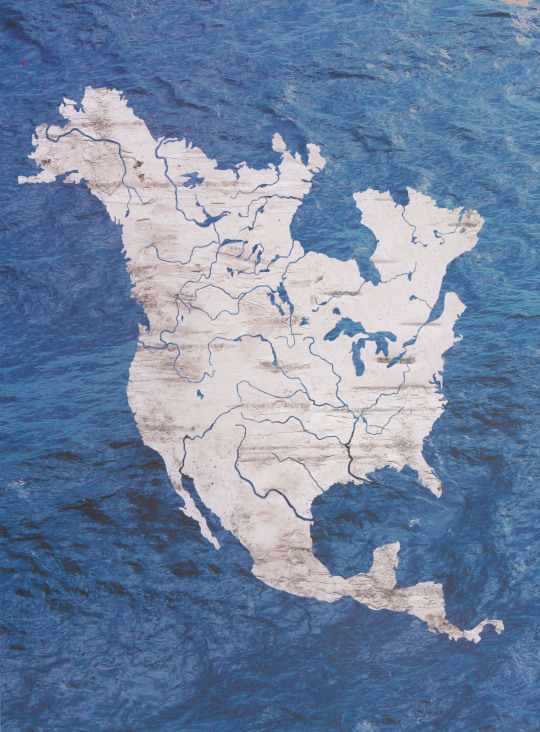

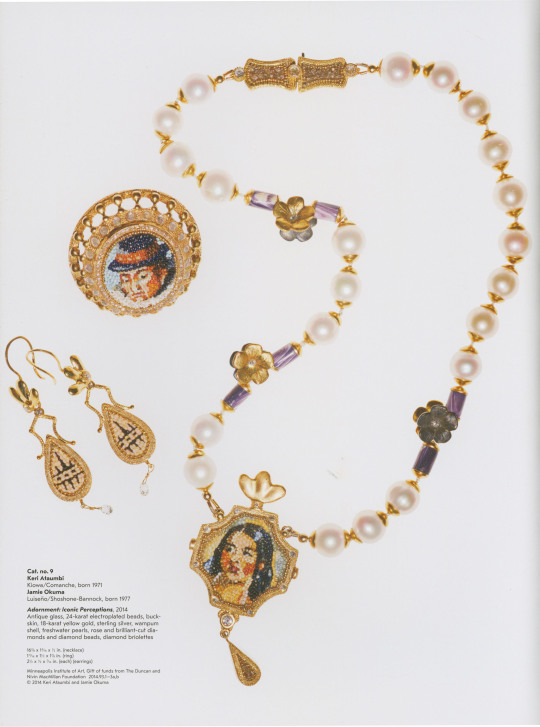

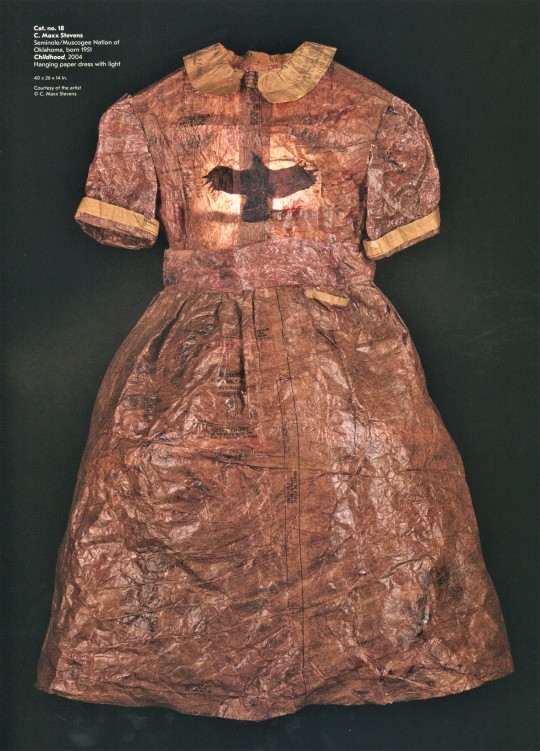

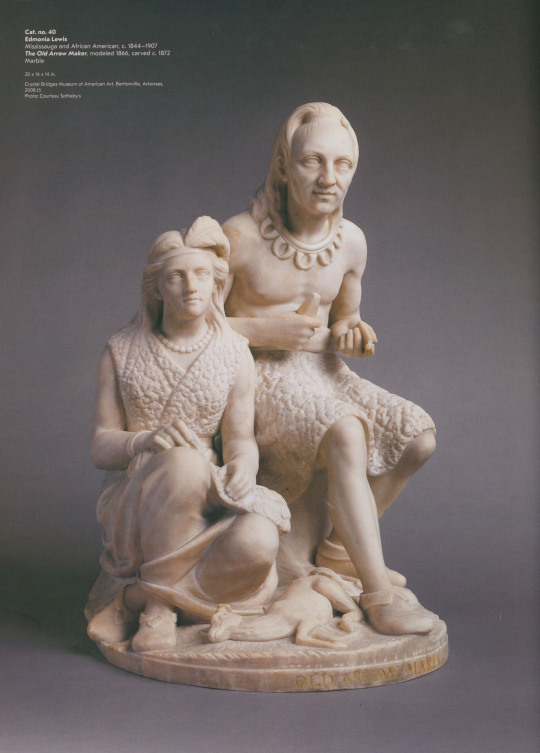
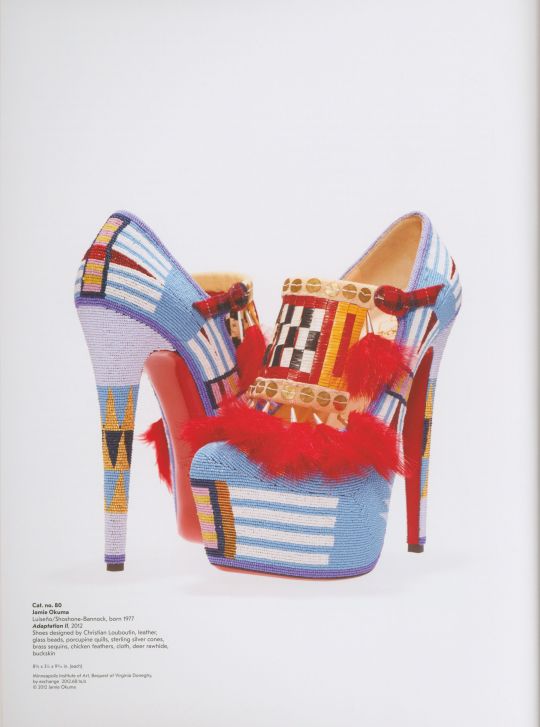


Indigenous People’s Day 2022
Today we commemorate Indigenous People’s Day with art by Native American Women from Hearts of Our People: Native American Artists. This exhibition catalog was published in Minneapolis in 2019 by the Minneapolis Institute of Art (MIA) in conjunction with the University of Washington Press to accompany the traveling exhibit “Hearts of Our People: Native Women Artists.” The exhibition catalog was prepared by MIA curator Jill Ahlberg Yohe and Kiowa artist Teri Greeves.
While the exhibit and its catalog featured art from antiquity through the present, I decided to primarily focus on the work of living artists, with the exception of the marble by Edmonia Lewis. Lewis, born in the mid-19th century to an African-Hatian father and a Black and Mississauga mother, is credited with being the first African American and first Native American to attain international success in the art scene. Trained in and working out of Rome, Lewis incorporated themes of Blackness and Indigeneity into her Neoclassical sculptural work. Whether through the subversion of traditionally European artforms or the reimagining of Indigenous traditions, the contemporary artists featured here alongside Lewis bring the depth of Native visual languages to a wide range of mediums.
Explore the exhibit further through the exhibition page from the Smithsonian American Art Institute, which hosted the exhibit from February 21-March 13, 2020.
View past Indigenous People’s Day posts here.
Find more posts on Native Americans here.
-Olivia, Special Collections Graduate Intern
#Indigenous People's Day#Hearts of Our People#minneapolis institute of art#University of Washington Press#Teri Greeves#jill ahlberg yohe#Edmonia Lewis#Ashley Fairbanks#Joan Hill#Lou-ann Neel#Jamie Okuma#Jody Folwell#C. Maxx Stevens#Christine McHorse#Cara Romero#Keri Ataumbi#Indigenous Artists#Indigenous Art#Indigenous Women#Native American Art#Native American Artists#Native Americans#olivia
343 notes
·
View notes
Text

By: Aaron Sibarium
Published: May 14, 2024
In dissertation titled 'Cite a Sista,' Tracie Jones-Barrett stole an entire passage on 'ethical considerations' from her classmate
In June 2021, a year into the cultural aftershocks of George Floyd's death, the Massachusetts Institute of Technology set out to meet the moment, as so many other schools had, by hiring more diversity officers.
MIT welcomed six new deans of diversity, equity, and inclusion, one for each of the institute's main schools, as part of a "DEI Strategic Action Plan" launched the previous year. Aimed at boosting the representation of women and minorities, in part by developing DEI criteria for staff performance reviews, the plan pledged to "make equity central" to the university "while ensuring the highest standards of excellence."
But according to a 71-page complaint filed with the university on Saturday, at least two of the six DEI officials may not be living up to those standards. The complaint alleges that Tracie Jones-Barrett and Alana Anderson are serial plagiarists, copying entire pages of text without attribution and riding roughshod over MIT's academic integrity policies.
In her 2023 dissertation titled "Cite a Sista," which explored how black women in the Ivy League "make meaning of thriving," Jones-Barrett, MIT’s deputy "equity officer," lifts a whole section on "ethical considerations" from Emmitt Wyche III, her classmate in Northeastern University's Graduate School of Education, without any sort of citation.
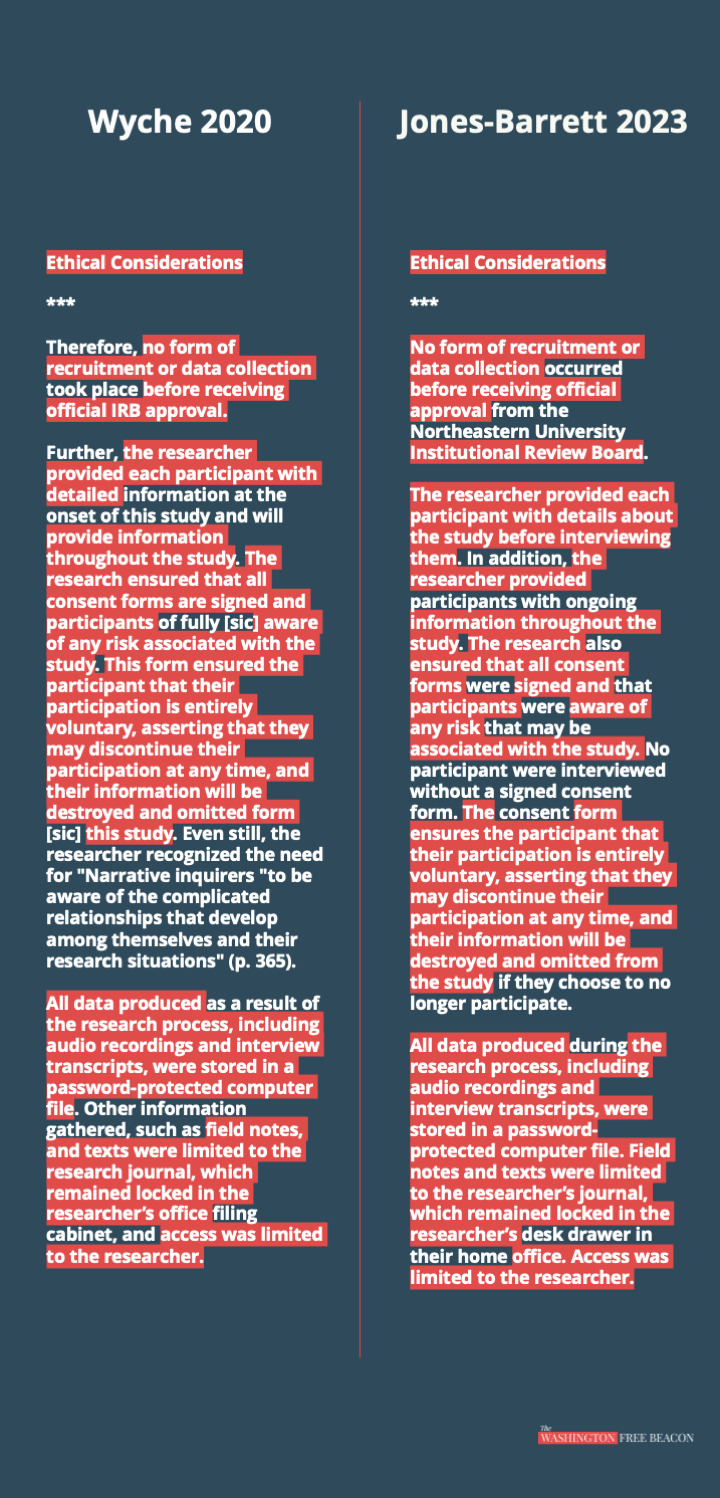
The section is one of several long passages taken from Wyche's 2020 thesis, "Boyz in the Hoods: (Re) Defining the Narratives of Black Male Doctoral Degree Completers," which does not appear in Jones-Barrett's bibliography. Wyche and Jones-Barrett did not respond to requests for comment.
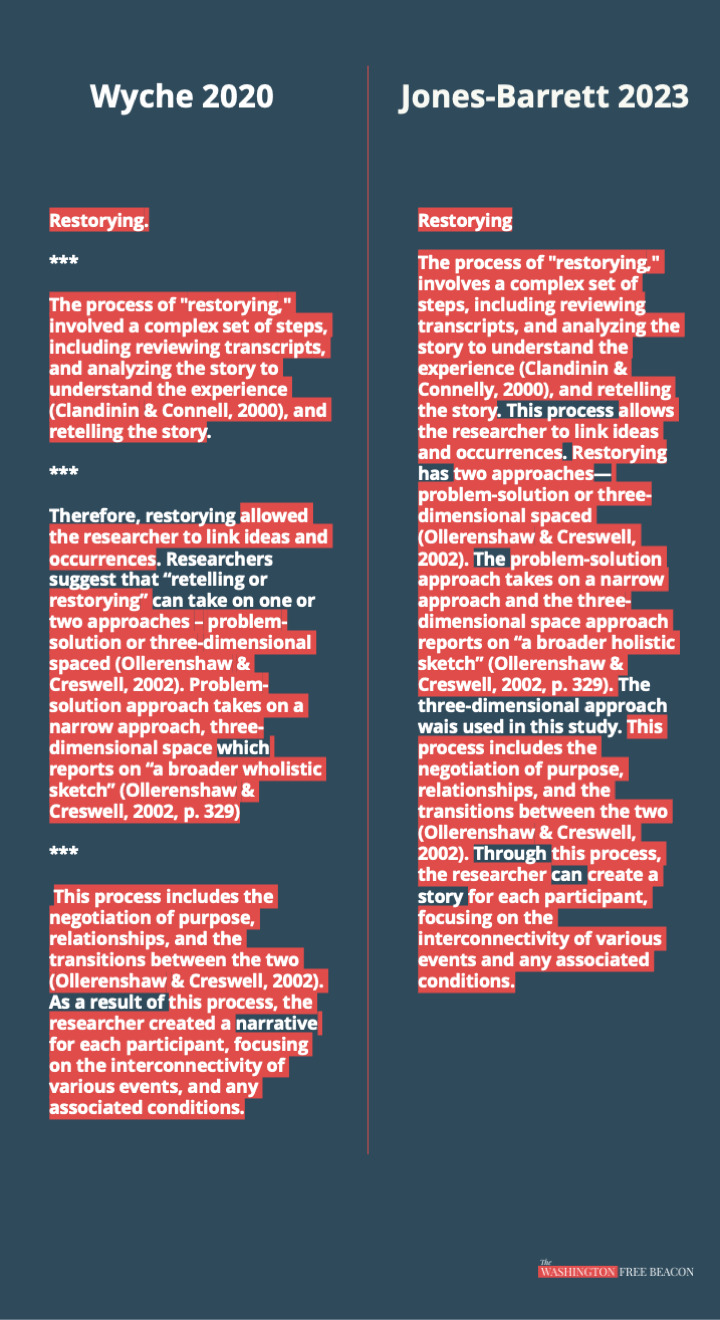
Anderson, who served as the diversity czar for MIT's computer science college until last year, when she left to become Boston Beer Company's inclusion and belonging program manager, likewise copied copious material from other scholars. Her 2017 dissertation, "#BLACKONCAMPUS: A Critical Examination of Racial and Gender Performances of Black College Women on Social Media," lifts over a page of material from Mark Chae, a professor of counseling at Pillar College, who is not cited anywhere in her dissertation.

"It would have been nice to at least get a citation!" Chae told the Washington Free Beacon in an email. "Anderson seems quite comfortable in taking credit for large portions of another writer's scholarly work."
Anderson, who held DEI posts at Boston University and Babson College before coming to MIT, lifts another long passage from Jarvis Givens, a professor at the Harvard Graduate School of Education, without an in-text citation. The omissions appear to violate MIT's plagiarism policy, which states that scholars must cite their sources any time they "use the words, ideas, or phrasing of another person."

MIT did not respond to multiple requests for comment.
In total, the two diversity deans lifted about 10 full pages of material without attribution, according to the complaint, as well as dozens of shorter passages sprinkled throughout their theses.
Like former Harvard University president Claudine Gay, who resigned in January amid her own plagiarism scandal, Anderson even stole language from another scholar's acknowledgments, copying phrases and sentences used by Khalilah Shabazz, now a diversity official at Indiana University-Purdue University Indianapolis, to thank her dissertation advisers.
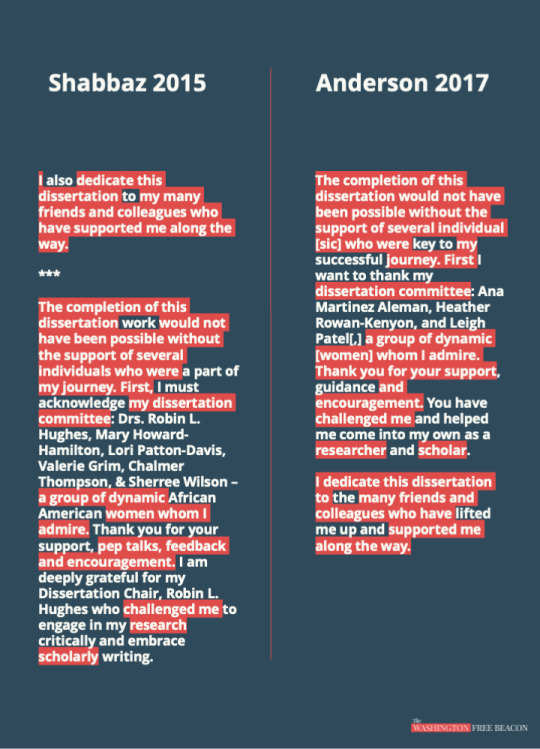
Anderson's acknowledgments contain several typos not seen in Shabbaz's, including missing words and commas and a lack of subject-verb agreement.
Givens and Shabbaz did not respond to requests for comment. Anderson, who received her Ph.D. from Boston College's school of education, did not respond to a request for comment. Boston Beer Company did not respond to a request for comment.
Saturday's complaint, which was submitted to Boston College and Northeastern University alongside MIT, is the latest in a string of plagiarism allegations against campus diversity officials. Since Gay's resignation, DEI officers at Harvard, Columbia, the University of Wisconsin-Madison, and the University of California, Los Angeles, have been accused of research misconduct. Some, such as Columbia medical school's Alade McKen and UCLA medical school's Natalie Perry, copied pages of material from various sources—including Wikipedia—while others passed off old studies as new work.
The accused administrators have not been publicly sanctioned by their universities, which have either declined to comment on the allegations or issued statements in support of the officials. The complaint against Anderson and Jones-Barrett may be harder for MIT to brush aside, however, given the school's high-profile efforts to distance itself from DEI in the post-October 7 era.
The institute said this month that it would no longer require diversity statements from candidates applying to faculty positions, making it the first elite university to jettison the practice. It also led the way in restoring SAT requirements after many colleges went test-optional in an effort to boost diversity.
The pushback has come largely from MIT faculty and been driven, in part, by a sense that DEI programs excuse and even encourage anti-Semitism. An April article in MIT's faculty newsletter noted that an event on "Jewish inclusion" had whitewashed the rhetoric of the school's pro-Palestinian protesters, who have occupied campus buildings, called for "Intifada revolution," and allegedly chanted "death to Zionists."
"Jewish students," a blurb for the DEI event read, "are encountering much of the same discomfort that other minorities face on campus and in the world, in that they don't feel heard or acknowledged."
The two dissertations at issue are strikingly derivative, cobbled together from classmates, online sources, and even a book's dust jacket, and at times read like replicas of their unattributed source material.
Jones-Barrett's summary of her dissertation, for example, is nearly identical to the summary Wyche provides of his own. Both papers use "semi-structured interviews" to "gather insights" from black graduates of Ph.D. programs about their "subjective experiences" of "meaning-making," or, as Wyche misspells it, "mean-making." The primary difference is that Wyche's study deals with black men, while Jones-Barrett's deals with black women.
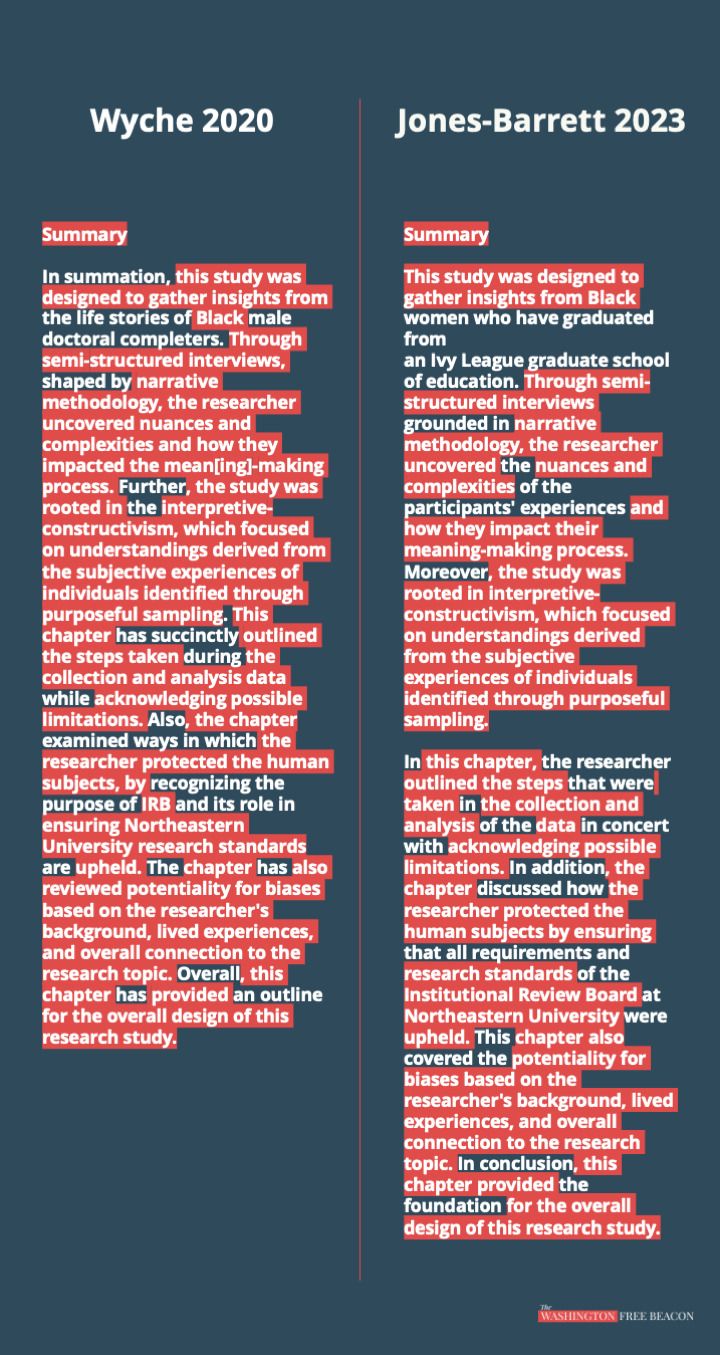
"This study, the first of its kind[,] uses Black Feminist Thought as a framework to explore and investigate how Black women at Ivy League graduate schools of education make meaning of thriving," reads the first sentence of Jones-Barrett's dissertation, which is missing a comma. "There are limited studies that center the voices of Black women at Ivy League graduate schools and there are no studies that look specifically at Ivy League graduate schools of education."
Jones-Barrett, who has taught courses at Harvard Extension School and was initially hired as the assistant dean of diversity, equity, and inclusion for MIT's humanities school, also poached a passage on "potential research bias" from Wyche—now a DEI consultant who describes himself on LinkedIn as a "status quo disrupter"—which asserts that "it is nearly impossible for the researcher to isolate their experiences from the investigative process."

He's not the only classmate Jones-Barrett appears to have plagiarized: On the first page of her dissertation, she lifts an entire paragraph from Scott Fitzsimmons, who earned his Ph.D. in education from Northeastern in 2021, without attribution, swapping out "rural EMS leaders" for "Black women in graduate programs." Fitzsimmons declined to comment.
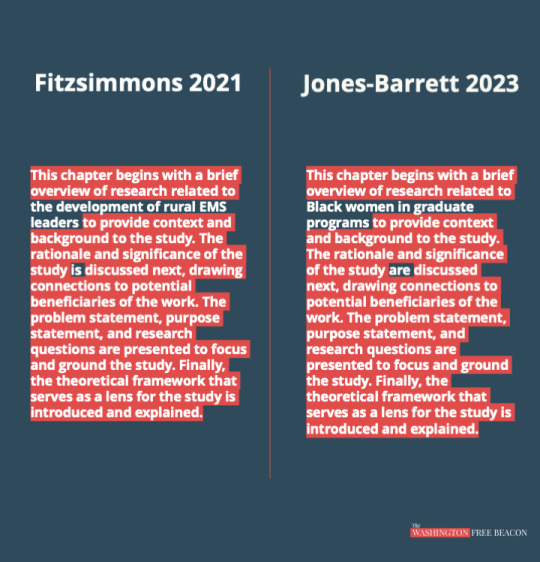
Anderson, meanwhile, lifts several paragraphs from a 2016 ThinkProgress article about her alma mater, Boston College, from which some of her study's interview subjects were drawn. That plagiarism undercuts her effort to prevent the school, to which she refers with a pseudonym, from being identified—a possible violation of the study's consent form, which promised participants that no "identifying information" would be disclosed.
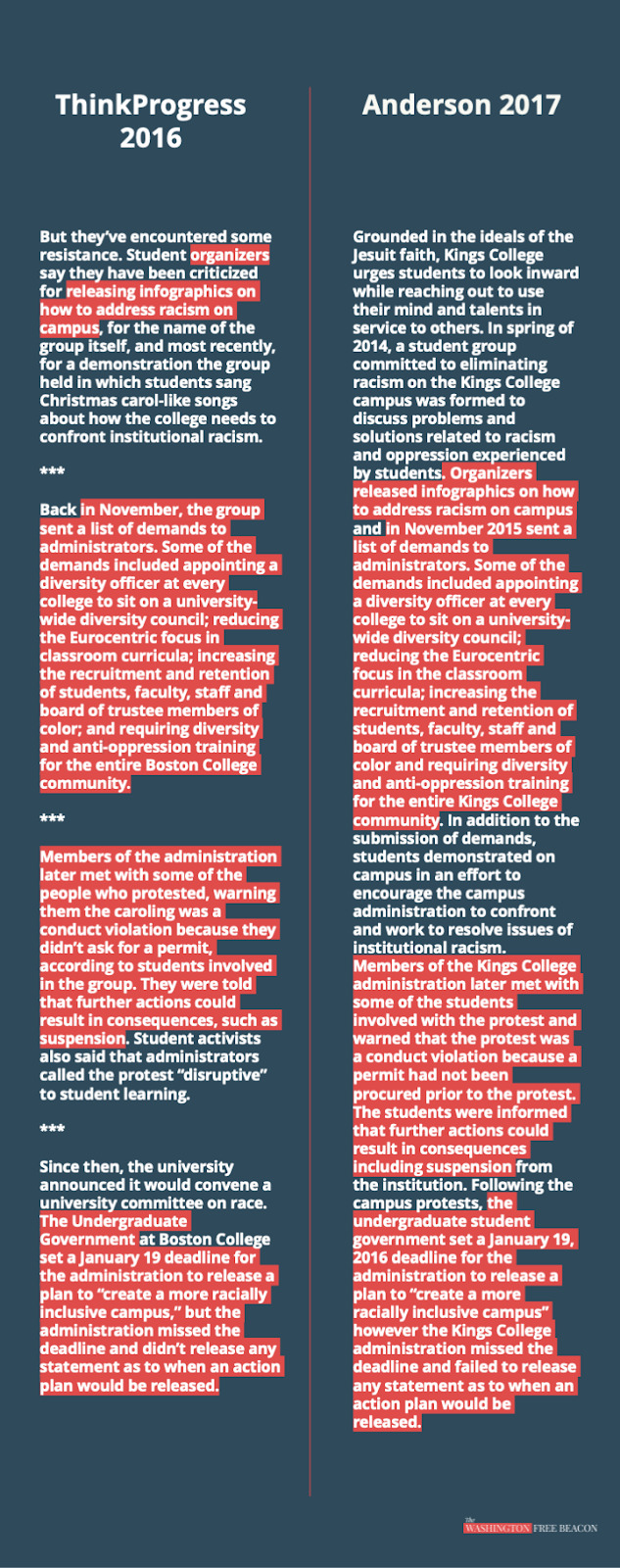
Boston College and Northeastern University did not to requests for comment.
Anderson—who runs her own consultancy that offers "scientifically-based" DEI programming—also borrows three sentences from the dust jacket of Ebony and Ivy, a 2013 book by MIT historian Craig Wilder, who is only cited in one of the sentences and whose words do not appear in quotation marks.
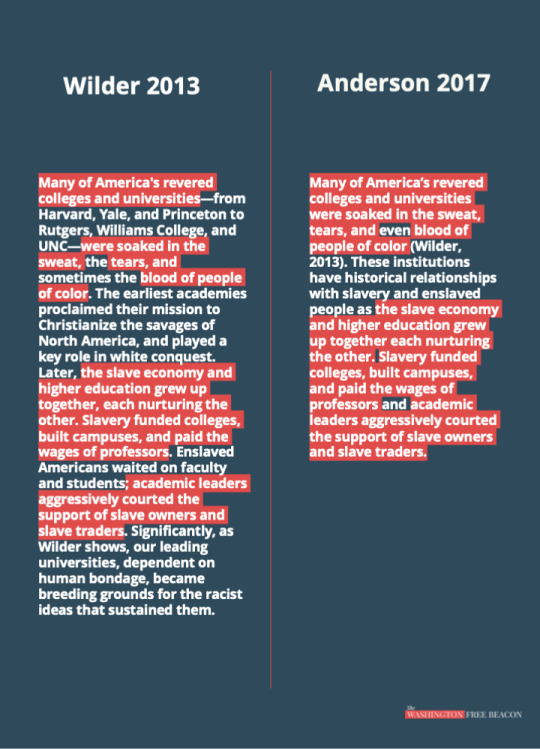
Like many of the authors plagiarized by Gay, Wilder defended Anderson's decision to copy his work, writing in an email that he didn't think a citation was necessary.
"I cannot imagine why anyone would cite a dust jacket, nor do I see the urgency of criminalizing the failure to do so," Wilder told the Free Beacon. "I'm honored," he added, when other scholars "find inspiration from my publications."
==
It's safest to assume all DEI apparatchiks and commissars are plagiarists, frauds and liars until proven otherwise.
#Aaron Sibarium#plagiarism#academic corruption#academic fraud#Alana Anderson#serial plagiarism#Tracie Jones-Barrett#DEI#diversity equity and inclusion#MIT#diversity officer#diversity#equity#inclusion#higher education#corruption of education#religion is a mental illness
7 notes
·
View notes
Text
Linguistic Jobs: Interview with a Data Manager & Digital Archivist
This month’s interview is with Julia Miller, a Data Manager and Digital Archivist who uses their Linguistics background to archive high-quality endangered language materials. As a recent PhD graduate, I greatly appreciated Julia’s validating advice that the absence of a tenure-track position or a position in the tech industry does not qualify as “failing”. This message is on-brand for this series, as one of the intentions behind these interviews is to demonstrate that Linguistics training is applicable to lots of jobs, not just the academic ones. Additionally, this interview contains some refreshing and practical advice regarding postdoc and PhD management.
You can follow Julia on Twitter @Spectregraph.

What did you study at university?
I began my undergrad studies in Portland, focusing on art (printmaking) and languages (Russian, French, German, later adding Arabic and Latin). I loved languages and exploring the patterns; at this point I didn’t know about Linguistics. After a short break from school and a bit of reflection, I moved to Seattle, enrolled at the University of Washington, switched my area of study to Linguistics and ended up getting the hat-trick of degrees in Linguistics all from UW: BA (1998), MA (2003), and PhD (2013). My research focused on acoustic phonetics and sociolinguistics; my PhD project explored acoustic properties of lexical tone in two dialects of the Dene language Dane-zaa, spoken in NE British Columbia. During my MA and PhD studies, I was fortunate to have been part of the DOBES Documentation of Endangered Languages program, working on a collaborative documentation project of the Dane-zaa (Beaver) language, which offered funding for tuition and fieldwork, as well as providing me with training in field methods, language documentation & description, and archiving. When I was in the final stages of writing my PhD thesis, I relocated to Australia and began working with PARADISEC, based at their node at the Australian National University (ANU), in order to expand what I knew about digital language archives, building upon what I learned working with the Language Archive for the Beaver DOBES project. I then received a Postdoctoral fellowship at the ANU**, working on another DOBES-funded collaborative documentation project, working with the languages of the Morehead District, Nen, Komnzo, Idi, Nmbo, spoken in the Western Province in Papua New Guinea. The postdoc work included phonetic analyses, sociolinguistic interviews, mapping projects, as well data management and archiving. Despite my love of phonetic description and social network analysis, by the time I submitted my PhD thesis, it was clear that I was more interested in data management and archiving than in linguistic analyses. This was a difficult, yet freeing revelation.
**I do NOT suggest starting a postdoc when you are still writing your completely unrelated PhD thesis! I submitted my thesis in between field trips to PNG.
What is your job?
I am the senior data manager for the ARC Centre of Excellence for the Dynamics of Language (CoEDL) as well as a digital archivist for the Pacific and Regional Archive for Digital Sources in Endangered Cultures (PARADISEC). I facilitate the archiving of indigenous and minority language digital material collected by CoEDL members and affiliates from the region, as well as other PARADISEC depositors world-wide. I offer training for researchers, students, and anyone interested in data management and archiving procedures. I liaise with other archives, cultural institutions, and language centres for collaboration. Despite not holding an academic position, teaching is still a large part of my daily work; I offer guest lectures in Field Methods and Digital Humanities courses and run intensive training sessions in digital archiving and data management for university researchers and job placement participants. I have developed curricula, technical workflows and archiving best-practice advice for audiences with different skillsets and goals. I also manage audio and manuscript digitising studios, where we digitise audio cassettes, reel-to-reel tapes, and field notebooks, etc. and I maintain a lending library of field equipment and offer training and advice.
How does your linguistics training help you in your job?
It would appear that my entire PhD path has prepared me for my current job. All the training I received in fieldwork, collaborative research, language documentation & description, and archiving allows me to understand the work our depositors are carrying out. I can offer informed advice and try to anticipate issues they may face in the field regarding data management, equipment failures, etc. And having archived my own materials in multiple archives, I can offer commiseration (and advice) as someone who has had to create metadata databases, follow strict formatting guidelines for A/V files, and adhere to deadlines based on funding agreements.
What was the transition from university to work like for you?
I am still working at a university, but the transition from an academic role to what is considered a non-academic role has been a bit of a challenge. I find I still do a lot of research for my work, and then try to pass on what I have learned in training modules and technical writing projects. I am fortunate to be in an environment that allows me to carry out what could be considered ‘supplemental’ work. Knowing that teaching and outreach are very important to me will help me on my career path as it evolves.
Do you have any advice you wish someone had given to you about linguistics/careers/university?
As a MA/PhD student, I would have loved to have been told of career options outside of Academia (or Big Tech), or even just been reassured that it is a valid option to not pursue tenure track jobs. I think many of my cohorts and I felt as if we failed or let down our professors by not getting a tenure track position in Linguistics. I’m glad to see that the culture of academia is changing and that there is support and advice made more available to students now.
Related interviews:
Interview with a Metadata Specialist and Genealogist
Interview with a Data Scientist
Interview with a Museum Curator
Interview with a Librarian
Interview with a Computational Linguist
Recent interviews:
Interview with a Natural Language Annotation Lead
Interview with an EMLS/Linguistics instructor & mother of four
Interview with a Performing Artiste and Freelance Editor
Interview with a Hawaiian and Tahitian language Instructor, Translator & Radio Host
Interview with a Customer Success Manager
Resources:
The full Linguist Jobs Interview List
The Linguist Jobs tag for the most recent interviews
The Linguistics Jobs slide deck (overview, resources and activities)
The Linguistics Jobs Interview series is edited by Martha Tsutsui Billins. Martha is a linguist whose research focuses on the Ryukyuan language Amami Oshima, specifically honourifics and politeness strategies in the context of language endangerment. Martha runs Field Notes, a podcast about linguistic fieldwork.
#data management#digital archivist#digital archiving#language archiving#endangered language archiving#ling jobs#linguist#language#linguistics#linguistics jobs#archiving
104 notes
·
View notes
Text
“On February 22, 1876, Thaté Iyóhiwiŋ, a Yankton Dakota woman living on the Yankton Indiana Reservation in South Dakota, and her European American mate, Felker Simmons, brought their daughter, Zitkála-Šá, into the world. Simmons would abandon mother and child, yet Zitkála-Šá describes the first 8 years of her life on the reservation as happy and safe. All that changed in 1884 when missionaries came to “save” the children.
Even though White's Indiana Manual Labor Institute was a Quaker project, it still forced the children who attended to adapt to the Quaker way of doing things, including taking new names. Zitkála-Šá was renamed Gertrude Simmons. In her biographies, Zitkála-Šá describes deep conflict between her native identity and the dominant white culture, the sorrow of being separated from her mother, and her joy in learning to read, write, and play the violin.
Zitkála-Šá returned to the reservation in 1887, but after 3 years she decided she wanted to further her education and returned to the Institute again. She taught music while attending school from 1891 to 1895, when she earned her first diploma. Her speech at graduation tackled the issue of women’s inequality and was praised in local newspapers. She had a gift of public speaking and music, and put both to good use during her life.
In 1895 Zitkála-Šá earned a scholarship to attend Earlham College in Richmond, Indiana. While in college she gave public speeches and even translated Native American legends into Latin and English for children. In 1887, mere weeks from graduation, her health took a turn for the worse; her scholarship did not cover all expenses, so she had to drop out.
After college Zitkála-Šá used her musical talents to make a living. From 1897-1899, she played violin with the New England Conservatory of Music in Boston. She then took a job teaching music at the Carlisle Indian Industrial School in Pennsylvania, where she also hosted debates on the issue of Native American treatment. The school used her to recruit students and impress the world, but her speaking out against their rigid indoctrination of native children into white culture resulted in her dismissal in 1901.
Concerned about her mother’s health, Zitkála-Šá returned to the reservation. While there she began to collect the stories of her people and translate them into English. She found a publisher in Ginn and Company, and they put out her collection of these stories as Old Indian Legends in 1901. Like most authors, she took another job at the Bureau of Indian Affairs as her principal support. It was at this job in 1902 that she met and married Captain Raymond Bonnin, a mixed-race Nakota man.
The couple moved to work on the Uintah-Ouray Reservation in Utah for the next 14 years. They had one son, named Ohiya. Zitkála-Šá met and began to collaborate with William F. Hanson, a composer at Brigham Young University. Together they created The Sun Dance, the first opera co-written by a Native American. The opera used the backdrop of the Ute Sun Dance to explore Ute and Yankton Dakota cultures. It premiered in 1913 and was originally performed by Ute actors and singers. Choosing such a topic for the opera would have been a way to strike back at forced enculturation, because the ritual itself had been outlawed by the Federal Government in 1883 and remained so until 1933. Much later, in 1938, The Sun Dance came to The Broadway Theatre in New York City.
From 1902-1916, Zitkála-Šá published several articles about her life and native legends for English readers. Her works appeared in Atlantic Monthly and Harper’s Monthly, magazines with primarily a white readership. Her essays also appeared in American Indian Magazine. While these pieces were often autobiographical, they were still political and social commentary that showed her increased frustration with the Bureau of Indian Affairs, which fired the couple in 1916.
In 1916, the couple moved to Washington D.C., where Zitkála-Šá served as the secretary of the Society of the American Indian. In 1926, she founded the National Council of American Indians, an organization that worked to improve the treatment and lives of Native Americans. By 1928, she was an advisor to the Meriam Commission, which would lead to several improvements in how the Federal Government treated native peoples.
Zitkála-Šá continued writing, and her books and essays became more political in such works as American Indian Stories (1921) and “Oklahoma’s Poor Rich Indians,” published in 1923 by the Indian Rights Association. She spoke out for Indian’s rights and women’s rights up until her death in 1938 at the age of 61"
📷: Gertrude Kasebier's photos of Zitkala-Ša, AKA Red Bird, from BUFFALO BILL'S WILD WEST WARRIORS. You can read about her in the book INDIGENOUS INTELLECTUALS by Kiara M. Vigil.

2 notes
·
View notes
Text

SETI institute employs SETI ellipsoid technique for searching for signals from distant civilizations
Researchers show that the SETI Ellipsoid method can leverage continuous, wide-field sky surveys, significantly enhancing our ability to detect these potential signals
In a paper published in the Astronomical Journal, a team of researchers from the SETI Institute, Berkeley SETI Research Center and the University of Washington reported an exciting development for the field of astrophysics and the search for extraterrestrial intelligence (SETI), using observations from the Transiting Exoplanet Survey Satellite (TESS) mission to monitor the SETI Ellipsoid, a method for identifying potential signals from advanced civilizations in the cosmos. The SETI Ellipsoid is a strategic approach for selecting potential technosignature candidates based on the hypothesis that extraterrestrial civilizations, upon observing significant galactic events such as supernova 1987A, might use these occurrences as a focal point to emit synchronized signals to announce their presence.
In this work, researchers show that the SETI Ellipsoid method can leverage continuous, wide-field sky surveys, significantly enhancing our ability to detect these potential signals. By compensating for the uncertainties in the estimated time-of-arrival of such signals using observations that span up to a year, the team implements the SETI Ellipsoid strategy in an innovative way using state-of-the-arc technology.
“New surveys of the sky provide groundbreaking opportunities to search for technosignatures coordinated with supernovae.” said co-author Bárbara Cabrales. “The typical timing uncertainties involved are of a couple months, so we want to cover our bases by finding targets that are well-documented over the course of about a year. In addition to that, it’s important to have as many observations as possible for each target of interest, so that we can determine what looks like normal behavior and what might look like a potential technosignature.”
In examining data from the TESS continuous viewing zone, covering 5% of all TESS data from the first three years of its mission, researchers utilized the advanced 3D location data from Gaia Early Data Release 3. This analysis identified 32 prime targets within the SETI Ellipsoid in the southern TESS continuous viewing zone, all with uncertainties refined to better than 0.5 light-years. While the initial examination of TESS light curves during the Ellipsoid crossing event revealed no anomalies, the groundwork laid by this initiative paves the way for expanding the search to other surveys, a broader array of targets, and exploring diverse potential signal types.
Applying the SETI Ellipsoid technique to scrutinize large archival databases signifies a monumental step forward in the search for technosignatures. Utilizing Gaia's highly precise distance estimates, the study demonstrates the feasibility of cross-matching these distances with other time-domain surveys like TESS to enhance monitoring and anomaly detection capabilities in SETI research.
The SETI Ellipsoid method, combined with Gaia's distance measurements, offers a robust and adaptable framework for future SETI searches. Researchers can retrospectively apply it to sift through archival data for potential signals, proactively select targets, and schedule future monitoring campaigns.
“As Dr. Jill Tarter often points out, SETI searches are like looking for a needle in a 9-D haystack,” said co-author Dr. Sofia Sheikh. “Any technique that can help us prioritize where to look, such as the SETI Ellipsoid, could potentially give us a shortcut to the most promising parts of the haystack. This work is the first step in searching those newly-highlighted parts of parameter space, and is an exciting precedent for upcoming large survey projects like LSST.”
As humanity continues to explore the mysteries of the universe, the SETI Institute remains at the forefront, employing innovative techniques like the SETI Ellipsoid to bridge cosmic distances and connect with potential civilizations among the stars.
IMAGE....SETI ellipsoid Credit Zayna Sheikh
2 notes
·
View notes
Text

Alan Saret
Open O, 1985 - 2005
Various steel alloys
Alan Saret’s (b.1944, New York) practice includes sculpture, drawing, painting, architecture, geometry study, writing, language study, and music. He is best known for creating sculptures with flexible materials, composed of wire and other “non-art” mediums. After a three-year sojourn in India in early 1970s where he focused on the spiritual and metaphysical, Saret’s approach to spatiality shifted to three-dimensional wire networks that explore the domain between order and disorder—leading to penetrated constructions that seem to come alive. Drawings with clusters of pencils, called “Gang Drawings,” were first used to represent sheet wire and later developed into an independent art form. While this work was labeled “anti-form” to distinguish it from hard-edged minimalism, Saret stresses its organic qualities, describing it as natural form because of nature’s flexible use of geometry. Although seen by some as process art, these works use process to reveal spirit and to ensoul.
Alan Saret’s work can be found in collections including the Art Institute of Chicago; Brooklyn Museum, New York; Dallas Art Museum; Detroit Institute of Art; Fogg Museum, Cambridge, Massachusetts; Hammer Museum, Los Angeles; High Museum of Art, Atlanta; Metropolitan Museum of Art, New York; Mildred Lane Kemper Art Museum, St. Louis; Minneapolis Institute of Art; MoMA PS1, New York; Morgan Library & Museum, New York; Museum of Contemporary Art Chicago; Museum of Contemporary Art, Los Angeles; Museum of Fine Arts, Houston; Museum of Modern Art, New York; National Gallery of Art, Washington, DC; Princeton University Art Museum, Princeton, New Jersey; Saint Louis Art Museum; Walker Art Center, Minneapolis; and Whitney Museum of American Art, New York.
4 notes
·
View notes
Text
Meet the Amatruda Lab!
James Amatruda, MD, PhD

www.chla.org
Dr. James Amatruda is the Head of Basic and Translational Research for the Cancer and Blood Disease Institute at Children’s Hospital Los Angeles. He’s the inaugural holder of the Dr. Kenneth O. Williams Chair in Cancer Research. Dr. Amatruda is a Professor of Pediatrics and Medicine for the Keck School of Medicine of USC. He attends on the Solid Tumor oncology service at CHLA.
Dr. Amatruda received his MD and PhD from Washington University School of Medicine. He completed his internship and residency in Internal Medicine from Brigham and Women’s Hospital. He was a Visiting Fellow at the Institute of Cell Biology in Consiglio Nazionale delle Ricerche in Rome and completed his Medical Oncology fellowship at Dana-Farber/Partners Cancer Care in Boston, Massachusetts.
When not in the lab, Dr. Amatruda enjoys running, reading, music-making and exploring around Los Angeles.
Ashley Jean, MD

www.chla.org
Dr. Ashley Jean is a Clinical Fellow in the Amatruda Lab. Dr. Jean graduated from Tufts Medical School in Boston and completed her Pediatric Residency at Maine Medical Center. Dr. Jean started her Pediatric Fellowship at Children’s Hospital Los Angeles in 2019.
Her research focuses on pediatric Ewing Sarcoma. She is currently studying the TAK1 pathway in the tumor genesis of this condition.
Dr. Jean likes to spend her free time outdoors. She enjoys activities such as hiking, paddle boarding and snowboarding.
Christopher Kuo, MD

www.chla.org
Dr. Christopher Kuo is a Clinical Fellow in the Amatruda Lab. Dr. Kuo received his Medical Degree from Rush University and completed his Pediatric Residency from Children’s Hospital Los Angeles. Dr. Kuo started his Pediatric Fellowship at Children’s Hospital Los Angeles in 2020.
His research interest is in osteosarcoma. He is currently working on a project that involves the investigation of the tumor microenvironment of Ewing sarcoma.
Dr. Kuo’s hobbies include breakdancing, swimming and going to coffee shops.
Adam Marentes, MSc., PhD Candidate

www.chla.org
Adam Marentes is a Graduate Student Researcher in the Amatruda Lab. Adam received his Bachelor of Science in Neuroscience from the University of California, Riverside. He then completed his Master of Science from California Polytechnic University Pomona. Adam is currently attending University of Southern California Keck School of Medicine to earn his PhD in Cancer Biology and Genomics.
Adam’s research focus is in mitochondrial DNA variants in Ewing Sarcoma. He is currently working on a collaboration that involves editing mitochondrial DNA in cancer cell lines in zebrafish.
Adam enjoys baking, playing video games with his fiancé and catching a show at the local comedy club.
Tanya Mosesian, MHA

www.chla.org
Tanya Mosesian received her Bachelor of Science in Public Health from California State University of Northridge. She then completed her Master of Health Administration at the University of Southern California.
Tanya is Project Associate for the Amatruda Lab. She provides on-site support for all administrative matters and project facilitation.
Tanya enjoys spending time with her family and friends. She likes to play tennis and hike during the weekends.
Elena Vasileva, PhD, MSc.
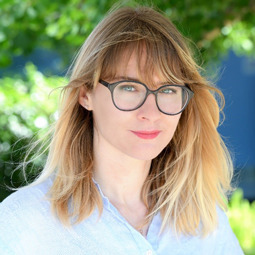
www.chla.org
Dr. Elena Vasileva is a post-doctoral fellow in the Amatruda Lab. Dr. Vasileva received her Bachelor of Science and Master of Science from Peter the Great St. Petersburg Polytechnic University in Applied Mathematics and Physics. She received her PhD in Molecular Biology from the Institute of Cytology, Russian Academy of Sciences.
Dr. Vasileva is interested in studying the molecular mechanisms of cancer development and progression. She has developed an inducible zebrafish model of EWS-FLI driven Ewing Sarcoma as a platform for biologic discovery and preclinical testing of novel therapies.
Dr. Vasileva enjoys running and hiking in Los Angeles.
Mona Wu, PhD
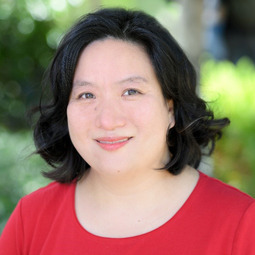
www.chla.org
Dr. Mona Wu is a post-doctoral fellow in the Amatruda Lab. Dr. Wu received her Bachelor of Science from the University of British Columbia, a Master of Science from Université de Montréal, and a PhD from McGill University.
Dr. Wu is interested in understanding the cell of origin for pediatric neoplasms because she believes that this knowledge could lead to better early biomarkers and more effective treatment. She is particularly interested in understanding how aberrant ncRNA (especially miRNAs) may play a role in pediatric disease.
Dr. Wu likes reading and visiting different libraries. She enjoys “foodie-related” activities including trying restaurants, cooking, baking and watching (far too many) cooking shows.
5 notes
·
View notes
Text
George Washington Carver
George Washington Carver had a difficult start in life. Born sometime around 1864, his dad died shortly before his birth, likely from an accident when he was out hauling wood. And only weeks after birth, slave traders kidnapped George and his mother. Rescued would not be an apt term; recovered is more appropriate. But the group sent out to find him and his mother exchanged a horse for the young boy. His mother, however, was lost to the traders. Less than two months old and George was already an orphan.
Often sick, frail, he was not expected to live. But live he did, and from a young age, he showed much devotion to work and a desire for learning. He was curious, and as he'd roam the woods near the Carver home, exploring flowers, trees, birds, he began asking questions about their purpose.
While much of his education early on was self-motivated, he began formal schooling at 10. He learned of a school about 8 miles from the Carver home. And without any money or a new home, he left the home to attend this school, living in an old barn, doing odd jobs to survive. Eventually, he was adopted into a family there.
Education for him would continue through completing a Masters Degree in agriculture from Iowa State University in 1896. After which he took a job as Head of the Agricultural Department at the Tuskegee Institute in Alabama
George was also an artist. At the age of 30, Carver gained acceptance to Simpson College in Indianola, Iowa where he was the first Black student. He studied piano and art.
As a scientist and inventor, his goal was to help farmers improve their lives by earning more from their crops. He found hundreds of uses through his research of peanuts in particular and other products such as sweet potatoes and pecans. His work was instrumental and impactful. Between 1915 and 1918, acreage for peanut cultivation grew from half a million to over four million acres.
After he passed away in 1943, Franklin D. Roosevelt sent a message: "All mankind are the beneficiaries of his discoveries in the field of agricultural chemistry. The things which he achieved in the face of early handicaps will for all time afford an inspiring example to youth everywhere."
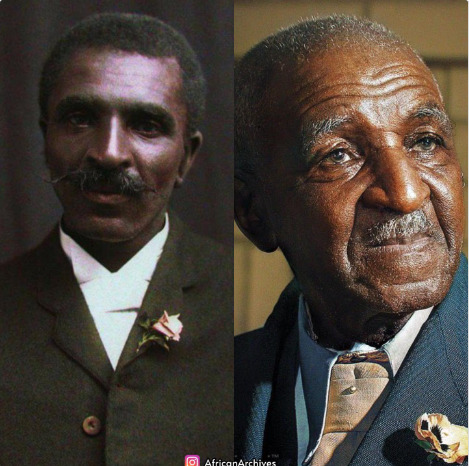
64 notes
·
View notes
Text

Before we jump into Jacob Lawrence, how do you feel about the long-form mini biographies?
Too long? Too condensed?
This one's a bit shorter and more career focused, better or worse?
Jacob Lawrence was born in 1917 in Atlantic City New Jersey to parents who had moved North from the rural South.
After his parent's divorce he was put into foster care in 1924, but he would meet her again at 13 in Harlem upon moving to New York.
His mother enrolled him in after school art programs. This was meant to occupy his time, but would grow into something much more.
He would learn under many prominent artists in the Harlem Renaissance including Augusta Savage.
His work, lively portrayals of historical narratives and events as well as contemporary glimpses into black urban life and culture. In both, he was deeply interested in the stories and lives of the black diaspora.
His unique approach garnered him much praise and success. His teacher, Charles Alston says of his work:
"Having thus far miraculously escaped the imprint of academic ideas and current vogues in art,... he has followed a course of development dictated by his own inner motivations... Working in the very limited medium of flat tempera he achieved a richness and brilliance of color harmonies both remarkable and exciting... Lawrence symbolizes more than anyone I know, the vitality, the seriousness and promise of a new and socially conscious generation of Negro artists."
In 1941, Jacob married fellow student of Savage and artist Gwendolyn Knight. They worked together and she would often assist him, gessoing panels and contributing captions.
In 1943, Jacob was drafted into the Coast Guard during World War II. He painted and sketched while he served, but sadly, all 48 of the pieces he produced documenting the war and his experience, are lost.
o prolific was Jacob, that many of his works are actually lost. Or at least partially. As he did works in series.
But, just in the last few years (2017, 2020, and 2021 respectively) some panels have actually been recovered.
Jacob also illustrated several children's books, including Harriet and the Promised Land in 1968 and 18 pieces for a collection of Aesop's Fables in 1970, full published with all 23 in 1998.
He dabbled in teaching. First at Black Mountain College, then The New School for Social Research, Pratt Institute and the Skrowhegan School, by 1970 he was teaching at the University of Washington and was a professor of art there from 1971 to 1986.
He took many commissions during this time, and of course never neglected his personal works. One of his most extraordinary works was in 1980 when he completed a 40 foot long mural dedicated to academic endeavor, made of porcelain and steel called Exploration.
In his later years, Jacob and his wife, created the Jacob and Gwendolyn Lawrence Foundation for the Creation, Presentation and Study of American Art. With particular interest in promoting and emphasizing the works of black artists. You can use it right now, and search the archives.
After a lifetime and hundreds of works under his belt, Jacob Lawrence continued to paint until his last days on earth. He died in the year 2000 from lung cancer at the age of 82.
We really only scratched the surface of Jacob's work, both in terms of detail and in quantity. The body of work he created in his life is staggering. His work was both simple and complex, and never shied from the political while lacking in any lofty pretentiousness. It must be seen to be appreciated.
If you would like to see his work, and learn about his life:
JACOB LAWRENCE, HIROSHIMA SERIES
Over the Line: The Art and Life of Jacob Lawrence
Jacob Lawrence and the art of radical imagination
Jacob Lawrence - MoMA
Jacob Lawrence - Smothsonian American Art Museum
Jacob Lawrence - The Migration Series
The MET - Jacob Lawrence: An Intimate Portrait, 1993 | From the Vaults
10 notes
·
View notes
Text
Anteaters may be most commonly known for their long snouts and sticky tongues, but at the University of Florida, they’re being used for something a little different: prosciutto.
University of Florida (UF) researchers have been working on a project to develop a sustainable method of producing prosciutto made from the meat of the endangered giant anteater, which is native to South America. The project, funded by the National Institutes of Health, is a collaboration between UF’s Institute of Food and Agricultural Sciences (IFAS) and the National Zoo in Washington, D.C.
The goal of the project is to create a sustainable method of producing prosciutto from the meat of the giant anteater, which is currently listed as an endangered species. While the meat of the giant anteater is eaten in parts of South America, the process of harvesting the meat is not sustainable due to its slow reproductive rate.
To create the prosciutto, researchers are using a special technique that uses a low-temperature, dry-aging process to tenderize the meat and give it a unique flavor. The process takes about two months and involves salting the meat with sea salt and curing it in a controlled environment.
The resulting product is a lean, flavorful prosciutto that is rich in protein and minerals, and free of additives and preservatives.
The team is currently working on a prototype of the product and plans to conduct a taste test soon. If the taste test is successful, the prosciutto could eventually be sold in stores, helping to support the conservation of the species.
“This is a great opportunity to develop a product that not only tastes great, but also helps to support the conservation of a species,” said UF researcher Dr. Sarah D’Amato. “We’re hoping that this project will help to raise awareness of the giant anteater and its plight, and also provide an additional income source for local communities.”
The team is also exploring other potential uses for the meat of the giant anteater, such as hamburgers and sausages, which could also help to support the conservation of the species.
As the project moves forward, the team hopes to develop a sustainable production method that is both economically viable and beneficial for the species.
4 notes
·
View notes
Text
MIND-BODY POOL FITNESS
Evidence Based
This post is the second in our summer series introducing you to new exercise options. In each post I provide evidence based information and, if you find something piques your curiosity or invites you to try it, I’ll be thrilled. My goal with this series is to provide you with data and support in loving yourself healthy.
Did you know that the sensory-rich pool environment—soothing and simultaneously challenging—is an ideal setting for mindful movement and a welcome respite from digital stress? Fitness innovators have been creating mind-body pool fitness offerings in the water, with programs like paddleboard yoga, aquatic Pilates, Ai Chi and fusion classes.
What Is Mind-Body Pool Fitness?
Use of the term “mind-body” here doesn’t imply that other fitness forms are not mindful. Rather, mind-body indicates that the activity’s predominant objectives are to:
Intentionally coordinate breath with movement,
Emphasize precise alignment,
Challenge balance and centering,
Enhance kinesthetic and present-moment awareness.
This creates a more mindful, meditative state, while at the same time conditioning the body.
Healing Benefits of Water
Bruce Becker, MD, MS, director of the National Aquatics and Sports Medicine Institute and adjunct professor at Washington State University in Spokane, Washington, and other investigators studied the healing benefits of immersion in different temperatures of water. They discovered that immersion in “cool,” “neutral,” or “warm” water can benefit healthy individuals by:
Lowering blood pressure and increasing cardiac output and stroke volume (all water temperatures);
Strengthening respiratory muscles and thereby improving breathing capacity (all water temperatures);
Enhancing mood and relaxation (warm water)
The authors of this study suggest that these benefits are amplified when water immersion is combined with exercise.
YOUR MIND-BODY FAVORITES—IN THE POOL!
Yoga
Pool yoga can be a chance to explore the self-discovery that water offers if you have mobility limitations on land. “Most asanas can be adapted to water, but to me this is not the point of aqua yoga,” says water yoga pioneer Françoise B. Freedman, PhD, author of Aqua Yoga and founder of the Birthlight Trust, an educational charity based in the United Kingdom that has been offering water yoga for over 30 years. “Through mindfulness, we gain awareness of our rhythms in relation to the water environment.”
"More and more people are coming to the water for the meditative aspect. They want to be someplace where they can’t take their phones." -- Jessie Benson, Founder FloYo.
Standup Paddleboard Yoga and Mat Pilates
These exercise forms are appealing if you are eager for a challenge but also want a more mindful experience. In 2012, Jessie Benson founded FloYo®, a paddleboard yoga program she describes as a workout that utilizes the core while connecting mind and body to create a strong physique and a clear mind.
Similarly, Pilates classes feature mat Pilates exercises performed on a floating board.
Benson says, “More and more people are coming to the water for the meditative aspect. They want to be someplace where they can’t take their phones. [Not everyone can do] a regular sitting meditation practice, and water attracts a broader range of people who want the clarity [that meditation can offer].”
Tai Chi and Ai Chi
Water-based programs inspired by tai chi and qigong may appeal to you if you are seeking restoration and recovery. Ai Chi is a globally popular program created by Jun Konno, president of Aqua Dynamics Institute in Japan. Ai Chi includes visualizations and affirmations and is based on three principles:
Deep diaphragmatic breathing
Concentration on form and body awareness
Acceptance that “how it turns out is the way it’s meant to be”
"Your individual path is unique. Listen to the wisdom of your body and the power of your intuition to discover what is good and right for you." -- Shirley Archer, the Wellness Sensei
If Mind-Body Pool Fitness sounds like an interesting option to explore, do a search of your local area to find out what’s offered. I’d love to hear your experience if you take a class!
Until next time may you be at ease and peace and remember to love yourself healthy!
References
Hildenbrand, K., et al. 2010. Age-dependent autonomic changes following immersion in cool, neutral, and warm temperatures. International Journal of Aquatic Research and Education, 4 (2), 127–46.
Naumann, J., et al. 2016. Outcomes from a three-arm randomized controlled trial of frequent immersion in thermoneutral water on cardiovascular risk factors. BMC Complementary and Alternative Medicine, 16 (250).
Have you downloaded your Path to Peace Free Guided Journal?
Go from feeling anxious and stressed
to calm and at-ease in 5 simple steps!
I’m a wellness visionary, integrative health educator and embodied mindfulness expert.
Learn more >
If this post helped you, please share by using the social buttons above. I appreciate your support!
#Easy#Meditation#Beginner#Tips#Breath#Tension#Mindfulness#Guided Meditation#Happiness#Live Well#Aquatics#Pool Fitness#Mind Body
9 notes
·
View notes